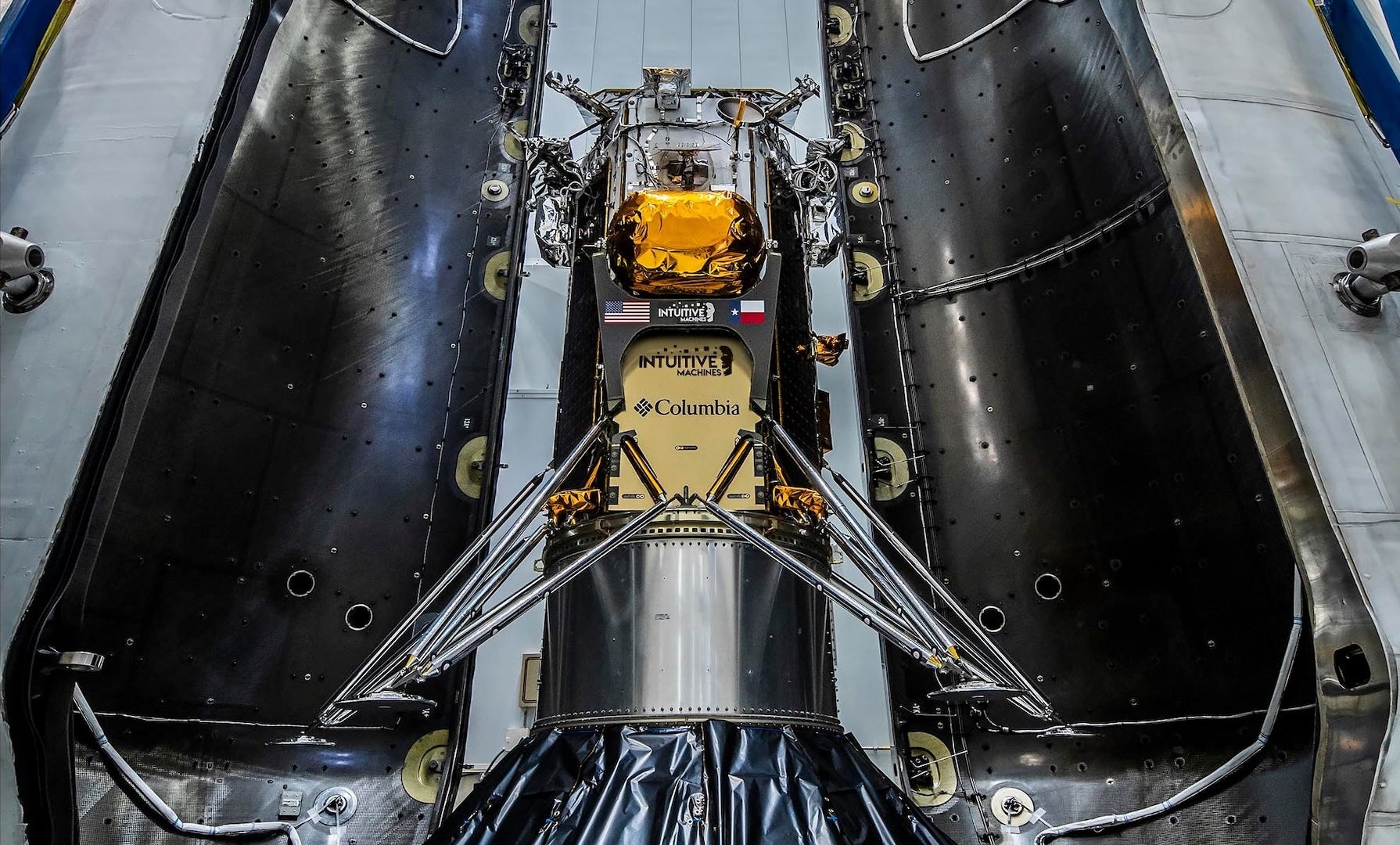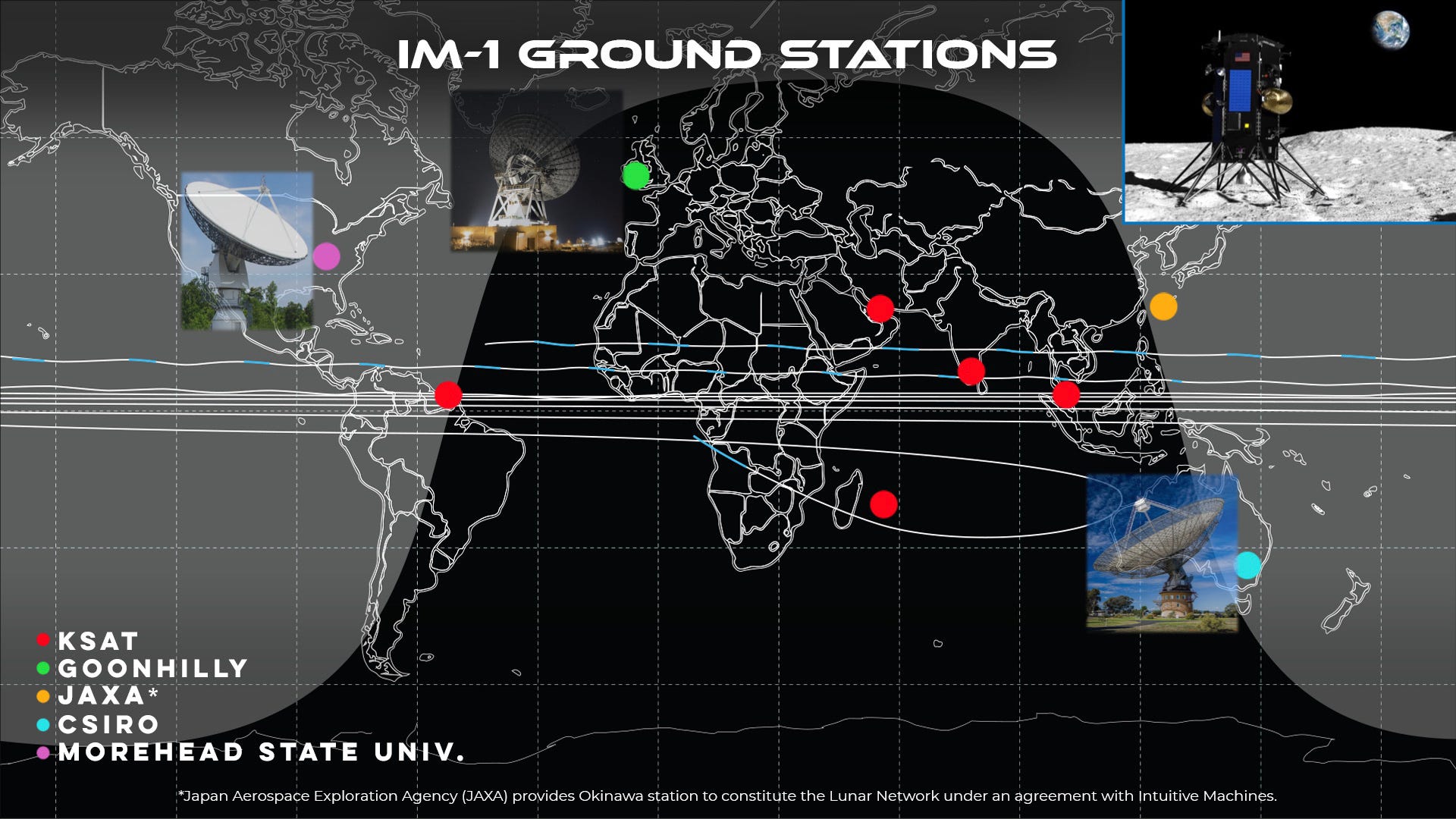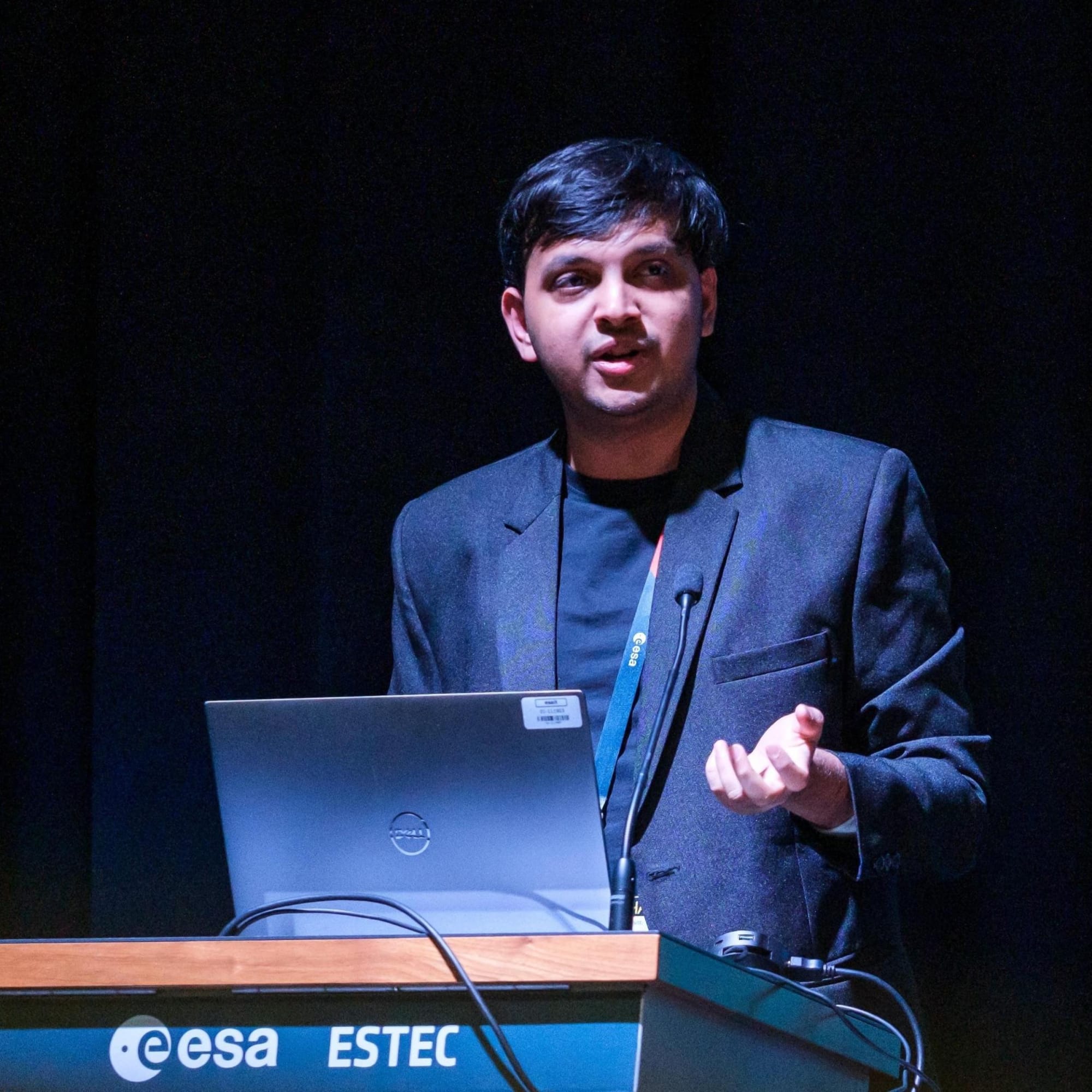Moon Monday #163: Another lunar lander ready to loft, betting on Starship, speaking at ESA, and more mission updates
Intuitive Machines set to launch for Luna

SpaceX and Intuitive Machines are targeting a Falcon 9 rocket launch of the latter’s first Moon lander during a three-day window opening on February 14 at 5:57 UTC. The mission, named IM-1, will carry six NASA science & technology payloads as part of the agency’s CLPS program. These include a radio beacon and a LiDAR to help test advanced navigation technologies for future Moon landers. If all goes to plan, IM-1 will attempt to land on Luna on February 22 at the near-polar site of the Malapert A crater at 80°S.
To follow IM-1 developments, see NASA’s dedicated webpage and my rundown on how to follow everything CLPS.
IM-1 will also carry a separate, commercial telescope called ILO-X from Hawaii-based International Lunar Observatory Association. While CLPS competitor Astrobotic’s first lunar landing mission failed last month, Intuitive Machines has continued to show confidence in their attempt. The public company earlier told Jeff Foust of SpaceNews that they have studied recent failed Moon landing attempts to subdue similar weaknesses in their lander, such as having dissimilar redundant inertial measurement units—the lack of which afflicted the lunar descent of Israel-based SpaceIL’s Beresheet lander.
But the fact remains that five out of the past nine lunar landing missions have failed. Even as lunar ambitions skyrocket worldwide, having a robotic lander touchdown by itself remains a daunting undertaking. Until IM-1 is aloft, its engineers will not really know if their testing regime was appropriate. In a feature piece for Nature, I explain the key tests and challenges engineers face in preparing a lander for Luna:
Also related: Past mistakes to avoid in our grand return to the Moon this decade

As urged by NASA for CLPS, Intuitive Machines signed multiple agreements over the years to get commercial Earth communications services for IM-1 to avoid further straining the precious but limited bandwidth of the agency’s Deep Space Network. Relatedly, Intuitive Machines has been progressing well towards its second Moon landing mission, which is also part of CLPS.
Betting on Lunar Starship

OffWorld and Astrolab are among the handful of companies creating for the Moon with a bet on SpaceX’s Starship bringing about a paradigm shift in launch mass and volume. With support from ESA and the Luxembourg Space Agency, OffWorld aims to send a large, autonomy-capable rover on a Lunar Starship no earlier than 2027 which will specifically locate and process water-ice containing soil at the Moon’s south pole as a demonstration. OffWorld hopes to send swarms of such rovers in the future, all working in tandem to extract and process lunar resources at scale.
Astrolab aims to send its first lunar rover called FLEX on a 2026 Starship launch, carrying at least eight payloads worth $160 million. With a large payload capacity of up to 1,000 kilograms, FLEX sports essentially the same design that Astrolab pitched to NASA last year for the agency’s request for a versatile Lunar Terrain Vehicle, which will be used across Artemis missions starting Artemis V for more than 10 years.
Relatedly, Interlune—a mostly quiet startup founded over three years ago by several former Blue Origin employees—raised $15.6 million to develop lunar resource extraction technologies. Interlune seems to particularly focus on developing an efficient method to sort lunar material by particle size, which in turn would allow faster passing over of feedstock into systems extracting oxygen on the Moon.
Thank you to Epsilon3 and The Orbital Index for sponsoring this week’s Moon Monday. If you love my work too, join them to support this project.
More Moon
- Axiom Space and NASA continue to test the core AxEMU suit design astronauts will wear during the crewed Artemis III lunar surface mission later this decade. Chosen competitively, the AxEMU suits offer enhanced mobility, upgraded insulation and cooling for the harsh lunar polar environment, and more such niceties compared to the current EMU suits used in Earth orbit. The latest series of tests concerned how well the suit is allowing astronauts to perform tasks related to handling samples on the Moon.
- Greece became the 35th country and 13th ESA member to sign the US-led Artemis Accords for cooperative lunar exploration.
- To prepare Artemis astronauts to explore the rocky, impact-cratered terrain at the Moon’s south pole, the Lunar and Planetary Institute and NASA have published a book which captures lessons from investigations of cratered lunar areas by Apollo astronauts. The book can be read and downloaded for free.
- How India’s Chandrayaan 2 orbiter helped Japan’s SLIM craft nail its Moon landing 📌
Speaking at ESA

It was an honor and a pleasure to deliver a talk on Chandrayaan 3 and India’s lunar ambitions at ESTEC, Netherlands last month at the invitation of the European Space Agency. To be honest, as an independent space writer with barely any resources, I never thought such a day would come. Many thanks to Francesco Liucci and team for being kind and helpful hosts. Attached below are my talk slides. Also see key takeaways from this Space for Inspiration event as posted by ESA.
